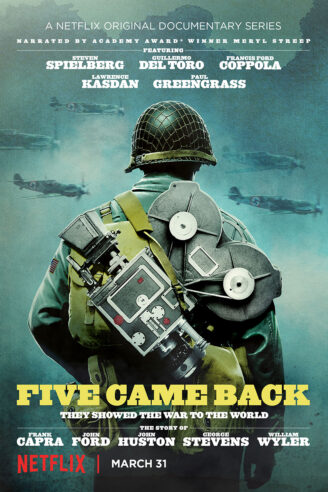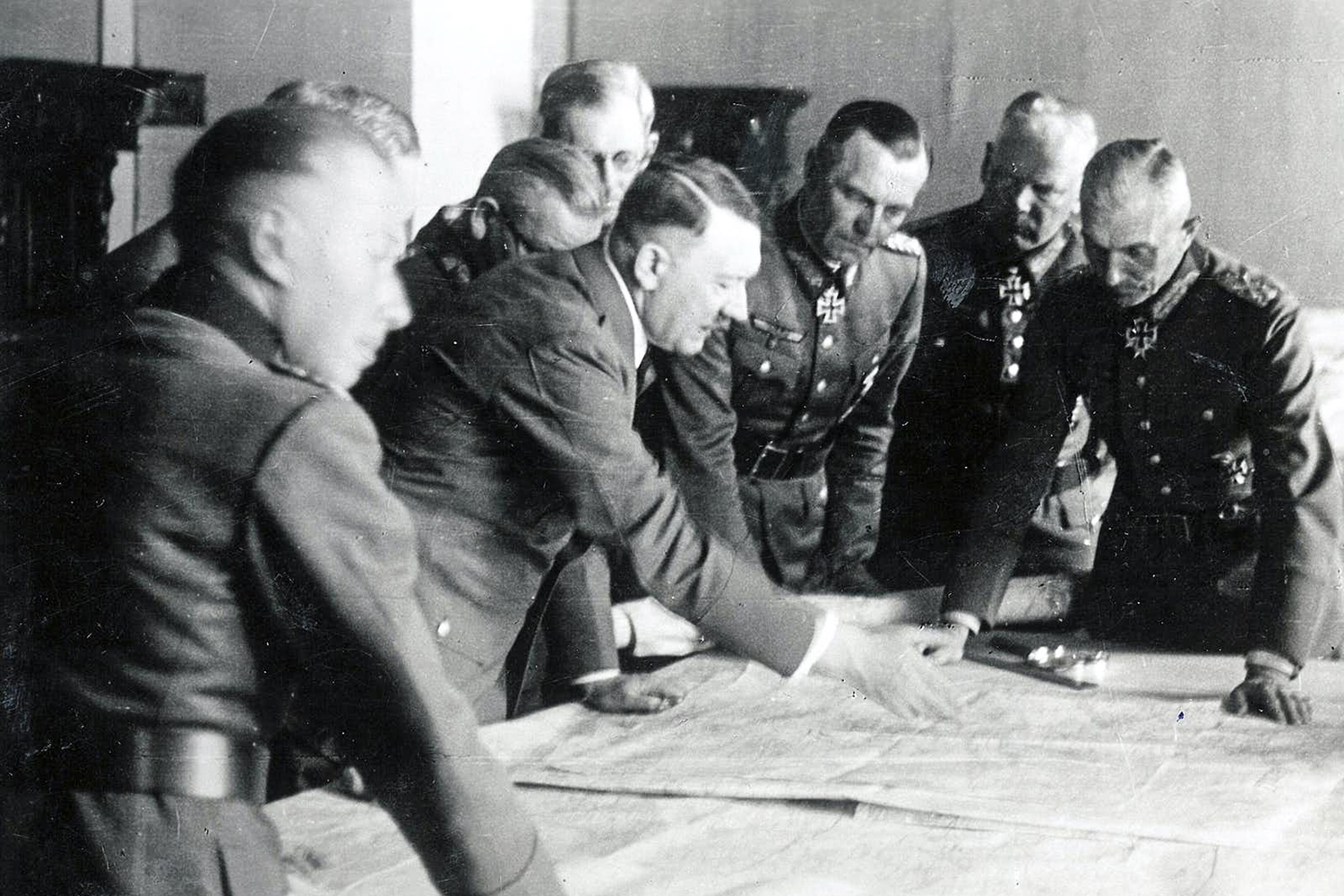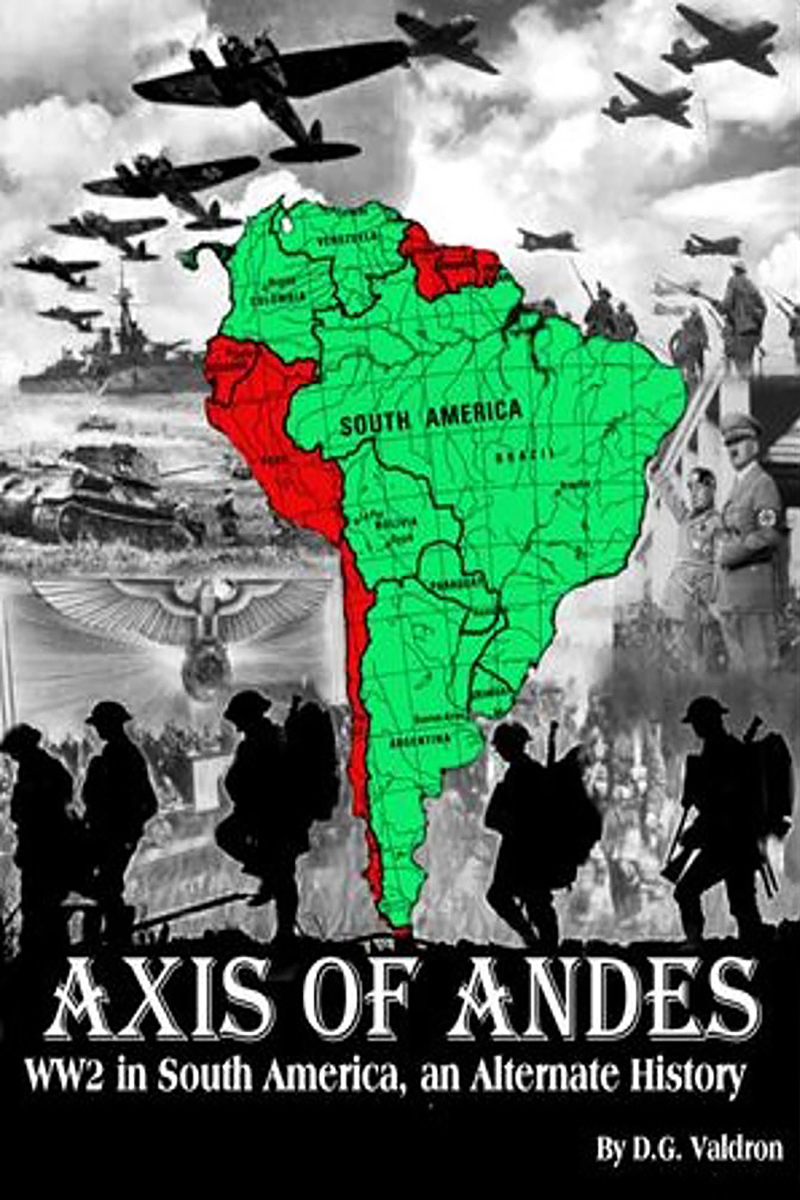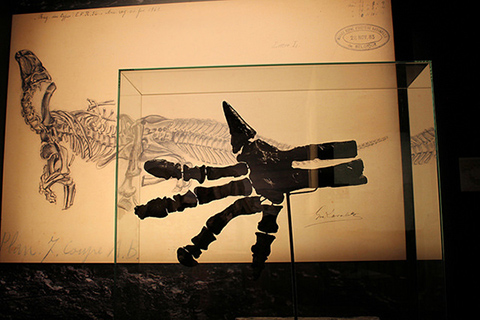Never Was readers may be familiar with Frank Capra’s Why We Fight series. I’ve used animations from the seven films, which were produced for the War Department between 1942 and 1945, in several stories, including “How the Nazis Planned to Invade Great Britain” and “The Rise and Fall of Japan’s Empire in Maps“.
But did you know the animations were from Disney? That Capra used Axis propaganda footage in his films? And that there were four more Hollywood directors who made movies for the war effort?
I didn’t. In Five Came Back, Francis Ford Coppola, Paul Greengrass, Lawrence Kasdan, Steven Spielberg, Meryl Streep and Guillermo del Toro tell the story of how five directors invented the war documentary.
In addition to Capra, who is best known for Mr Smith Goes to Washington (1939) and It’s a Wonderful Life (1946), John Ford, renowned for his Westerns; John Huston of The Maltese Falcon (1941), The Treasure of the Sierra Madre (1948) and The African Queen (1951); George Stevens of A Place in the Sun (1951) and Giant (1956); and William Wyler of Ben-Hur (1959) joined the army to make movies for soldiers and Americans at home.
Capra was desperate to match Leni Riefenstahl’s Triumph of the Will (1935), but he didn’t have a studio behind him and hardly any resources. His idea: use the enemy’s propaganda against them. He repurposed German, and later Japanese, footage, combining them with newsreels and context to bring out the truth.
The Why We Fight films were meant to motivate young soldiers, but, after seeing the first part, President Franklin Roosevelt ordered their commercial release to help rally a war-weary nation to the Allied cause. With success — the films were hugely popular.
Ford’s major contribution was The Battle of Midway, which started out as a leisurely portrayal of a far-flung American military base in the Pacific until it suddenly found itself in the center of one of the most decisive naval battles of the war. Ford filmed everything: the Japanese attack on the island, the casualties and the American victory. For many Americans, it was the first time they saw the maiming and murder of troops on screen — in color. But fears that it might sap the country’s morale proved unfounded.
This becomes a recurring theme: military authorities worried that showing the gruesome realities of war will demoralize the home front and the troops, but the documentary insists Americans understood who was to blame and were aware of the stakes.
When the army called Huston’s The Battle of San Pietro (1945) anti-war, the director argued that if he ever made a pro-war film, he should be shot. Nobody agreed, until General George Marshall — who had commissioned Capra and the other directors in the first place — intervened. He thought soldiers should see the film in order to prepare them for the realities of combat.
The five directors took different approaches. Capra was documenting the whole history of the war. Ford and Huston focused on particular battles. Stevens filmed the D-Day landings and then stayed with the American troops as they liberated towns in France and concentration camps in Germany. His pictures of Dachau were introduced as evidence at the Nuremberg war trials. Wyler’s approach was the most intimate. He zeroed in on individual soldiers and crews, notably in The Memphis Belle: A Story of a Flying Fortress (1944).
None of them had made war documentaries before. No one had. They were inventing a genre, and they made mistakes. Huston staged battle scenes in The Battle of San Pietro. Capra’s Know Your Enemy: Japan was so racist that General Douglas MacArthur vetoed it.
But there were highlights as well: The Negro Soldier (1944), which was the first time many white viewers saw African Americans as ordinary people on the silver screen instead of racist stereotypes, slaves or servants; and Let There Be Light (1946), Huston’s groundbreaking documentary about soldiers coming home from the war with post-traumatic stress disorder. It wasn’t released to the wider public until 1981.
These documentaries, in addition to Five Came Back, are streaming on Netflix.





